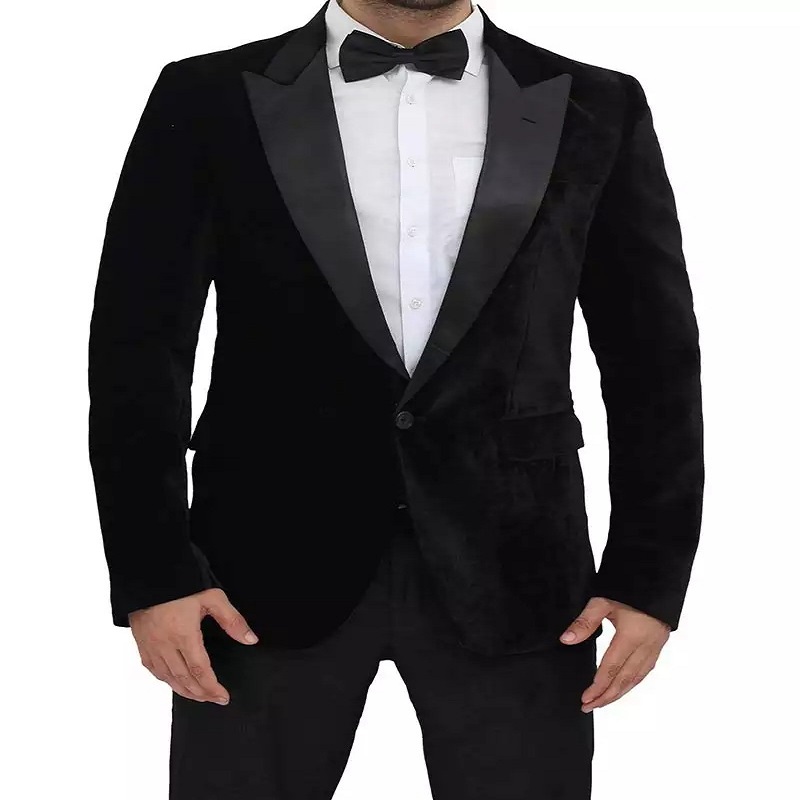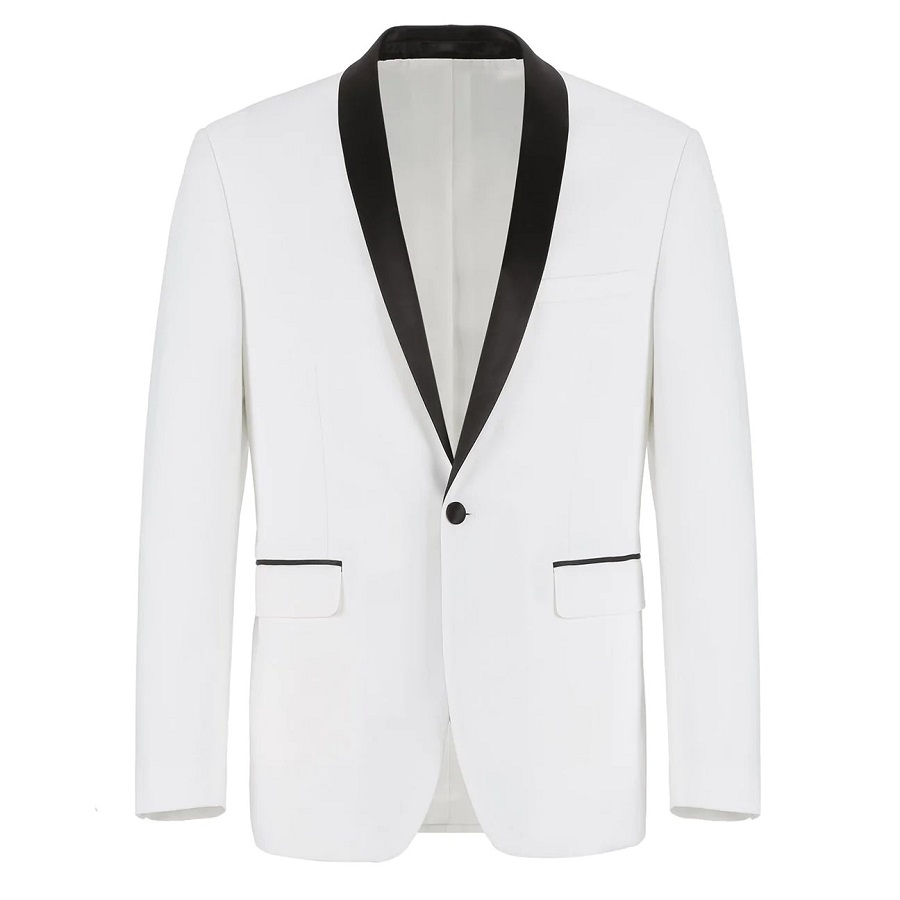The Origin and History of the Tuxedo
What is a tuxedo? To understand what a tuxedo is, we must dive into its rich history. The tuxedo has evolved from merely a piece of formalwear to a fashion statement. Its origin dates back to the late 19th century. The term ‘tuxedo’ comes from Tuxedo Park, a New York resort where the garment first gained popularity with the American elite.
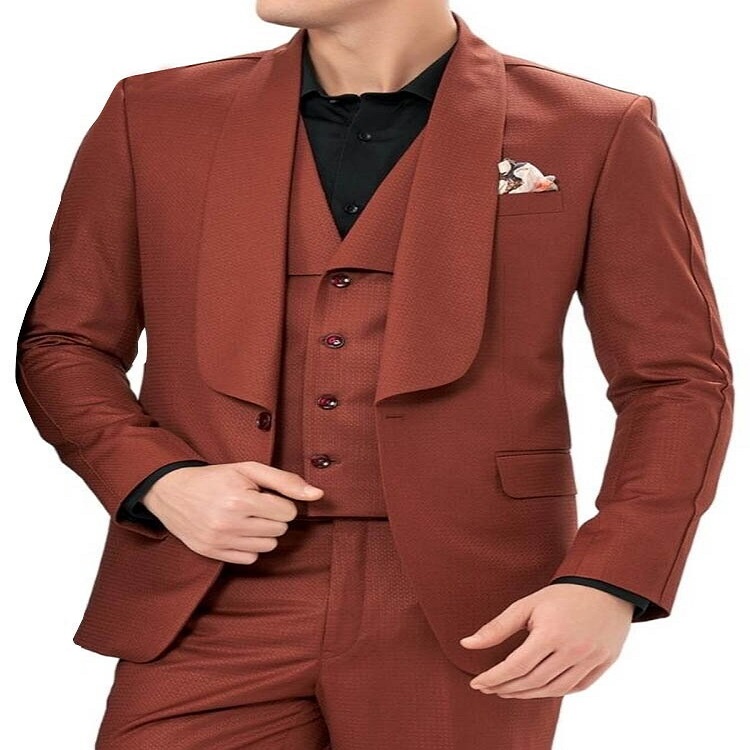
Early Beginnings and Evolution
The initial design was quite different from what we see today. The earliest tuxedo was a tailless black jacket worn with a white shirt, black bow tie, and low-cut waistcoat. It offered a more relaxed alternative to the stiff, formal tailcoats of that time. As a symbol of rebellion against more restrictive attire, the tuxedo rapidly gained favor.
In the early 20th century, the tuxedo began to refine its style. Lapels received satin facings and trousers gained the iconic satin stripe. These changes marked the tuxedo’s transition from an upstart disruptive trend to a staple of men’s formal wear.
The Tuxedo in Modern Times
The modern tuxedo maintains the fundamental features that define it, but with updated styles and materials. Designers have pushed the boundaries with various colors, patterns, and fabrics, adapting the tuxedo for contemporary tastes. Today, it is not just a sign of sophistication but also of personal style and expression.
In popular culture, the tuxedo continues to be associated with class and elegance. It remains the preferred choice for black-tie events, state dinners, and award ceremonies. As we explore further, we’ll discover how the tuxedo’s components, fit, and accessorizing choices contribute to its lasting appeal and how it retains its esteemed position in a man’s wardrobe amidst evolving fashion trends.
Key Components of a Classic Tuxedo
A classic tuxedo consists of several key components, each playing a crucial role in its overall look and elegance. Understanding these elements is essential for anyone exploring what is a tuxedo and its significance in formal attire.
Jacket Styles and Lapel Types
The jacket is the centerpiece of a tuxedo. Traditional styles include single-breasted with one to two buttons or double-breasted with four to six buttons. The choice of lapel is also important, with notch, peak, and shawl being the primary types. A peak lapel is more formal, often found on double-breasted jackets, while a shawl lapel offers a sleek curve, perfect for black-tie events.
Trousers and the Satin Stripe
Tuxedo trousers are distinct, featuring a satin stripe down the side that matches the lapel facing. This classic detail aligns with the tuxedo jacket, creating a unified look. Trousers should have a clean drape without breaks, to complement the jacket’s tailored fit.
The Role of Waistcoats and Cummerbunds
A waistcoat or cummerbund is worn to complete the tuxedo ensemble. A waistcoat adds a layer of sophistication and is ideal for a three-piece tuxedo look. A cummerbund, alternatively, offers a ruffled band around the waist and is preferred in warmer climates or for its traditional appeal in black-tie settings.
Each element of the tuxedo collaborates to present a polished appearance. The styles, materials, and fits available today provide men with various options to express personal style while adhering to formal dress standards.
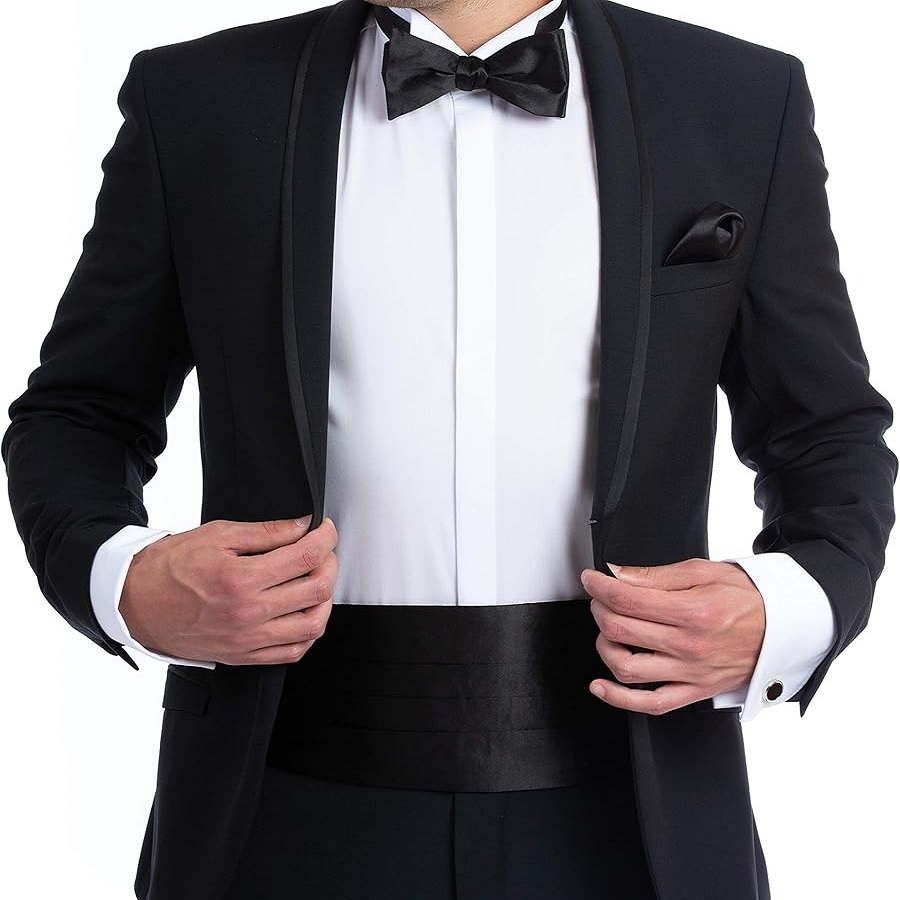
The Proper Fit: Tailoring Your Tuxedo
For a tuxedo to truly impress, the proper fit is non-negotiable. It’s what distinguishes a refined look from an ordinary one. Custom tailoring and precise measurements ensure that a tuxedo perfectly complements the wearer’s physique.
Importance of Measurements and Alterations
Measurements are the foundation of a well-fitting tuxedo. Skilled tailors measure shoulders, chest, waist, and other key areas for an exact fit. Alterations, when needed, make a world of difference. They adjust length, taper sleeves, and refine the torso for a flawless silhouette. Taking the time for professional fitting is a crucial step in tuxedo preparation.
Tips for Achieving the Perfect Fit
To achieve the perfect tuxedo fit, keep these tips in mind:
- Shoulder Fit is Key – The jacket should hug your shoulders without puckering or overhang.
- Consider Jacket Length – The jacket should cover your waistband and rear, but not be too long.
- Sleeve and Trouser Length Matter – Sleeves should end just above the wrist bones, and trousers should have a slight break.
- Waist Fitting – Ensure the waist of the trousers is snug but comfortable, allowing for sitting and movement.
- Seek Professional Guidance – Work with an experienced tailor who understands what is a tuxedo and how to fit it to your form.
Each detail, when addressed correctly, contributes to the classic and timeless appearance that a tuxedo is renowned for. Consider these tips as fundamental in the quest to present a polished and dignified look at your next formal event.
Occasions for Wearing a Tuxedo
Understanding when to don a tuxedo is as crucial as knowing what is a tuxedo. The elegance of a tuxedo is not for everyday wear; instead, it’s reserved for special occasions where the dress code demands a step above the rest.
Black Tie Events and Formal Gatherings
Whether it’s a gala, an opera premiere, or a formal fundraiser, black tie events are the quintessential setting for a tuxedo. For such occasions, it’s all about the classic black tuxedo, paired with a crisp white shirt and black bow tie. Here, adhering to tradition is key—making small personal touches while keeping with the formal setup.
Weddings and Special Celebrations
Weddings are another prime occasion for showcasing a tuxedo. Grooms and groomsmen often opt for tuxedos to elevate the celebration’s grandeur. During these joyous events, one might explore different colors and patterns to align with wedding themes. It’s also a time for guests to honor the special day by dressing in a manner that reflects respect and happiness for the couple.
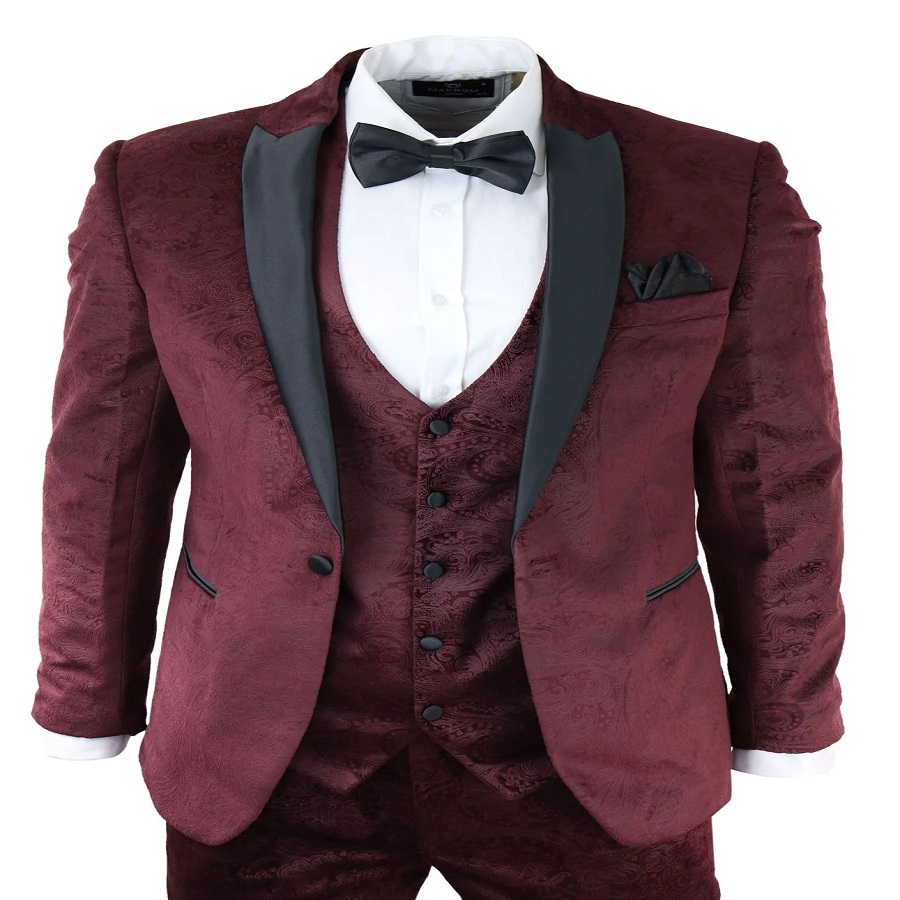
Accessorizing Your Tuxedo
Accessorizing a tuxedo is crucial to completing your formal look. The right accessories enhance the elegance while adding a touch of personal style. Let’s explore the essentials.
Selecting the Right Dress Shirt
When it comes to tuxedos, the dress shirt is just as important as the jacket. Look for a crisp, white dress shirt with a pleated front. Ensure the shirt collar is structured, ideally a wing-type for a bow tie. The cuffs should be French or double cuffs, ready for cufflinks.
Bow Ties, Neckties, and Pocket Squares
Bow ties are classic with tuxedos, but neckties can also be stylish when done right. Stick with silk in black or complementing hues. A pocket square adds a pop of color or sophistication—fold it neatly for a refined appearance.
Cufflinks and Footwear: The Finishing Touches
Cufflinks should match your watch or other jewelry. A simple, elegant design works best. For footwear, choose patent leather shoes or polished oxfords. They should be black, well-shined, and complement the tuxedo’s formality.
Tuxedo Etiquette and Dress Codes
Navigating dress codes is crucial when considering what is a tuxedo and when to wear it. Tuxedo etiquette is about understanding these codes and dressing appropriately for the occasion.
Understanding Black Tie and Variations
Black tie is the most formal dress code requiring a tuxedo. A classic black tie outfit includes a black tuxedo jacket, trousers with a satin stripe, a white dress shirt, a black bow tie, and often, a cummerbund or waistcoat. Variations such as ‘Black Tie Optional’ allow for dark suits as well, while ‘Creative Black Tie’ invites personal flair with different colors or patterns.
Dressing Appropriately for the Event
It’s essential to match your tuxedo to the event’s formality. For strict black tie events, adhere to timeless traditions. If the event permits variations, you can express your style with a unique bow tie or a pocket square. Always prioritize class and distinction to honor the event’s essence.
Modern Alternatives to Traditional Tuxedos
As fashion evolves, so do tuxedos. Today, modern alternatives to classic styles are gaining popularity. Designers experiment with different materials, colors, and shapes to fit changing tastes and lifestyles. When asking what is a tuxedo in the modern sense, it’s clear the definition is broadening.
Stylistic Variations and Contemporary Trends
New trends show tuxedos in bold colors like deep blues and even greens. Patterns such as plaids or floral designs are emerging for those looking to make a statement. Slim-fit and untraditional materials like velvet give a fresh take. Comfort and personal style stand out in today’s tuxedo choices.
Velvet jackets add a touch of luxury and are great for colder months. Slim-fit tuxedos work well for a more tailored appearance. Some opt for no tie or a tuxedo with sneakers for a mix of class and comfort.
The Rise of Casual and Thematic Tuxedos
Casual does not mean careless. Casual tuxedos can mean a relaxed fit, or skipping the waistcoat for a more laid-back look. Thematic tuxedos cater to specific events like proms or themed parties. They often feature unique prints and even costume-like elements.
Casual styles offer flexibility for less formal occasions. They let personality shine through while keeping a touch of elegance. Thematic tuxedos serve as conversation starters and show the fun side of formality. They adapt to the event’s theme, maintaining a festive spirit.
In summary, modern alternatives to traditional tuxedos blend classic elegance with current trends. They allow more expression and adaptability for the wearer, proving that tuxedos are not just for black-tie affairs anymore.
